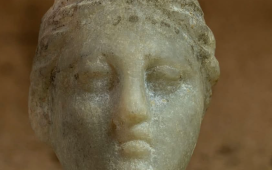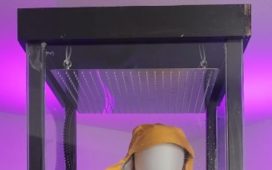[ad_1]
Researchers made the shocking discovery by analysing harmless bacteria on the International Space Station (ISS). They discovered the bacteria in extreme space conditions can transform quicker into superbugs which are much more difficult to cure and more potent. The stress of spaceflight can also make it much harder for humans to fight off any disease, which creates the “perfect storm” in future Mars missions.
However, to combat the rising superbugs in space, scientists have created a special coating – called AGXX – which destroys the bacteria on contact.
Senior study author Professor Elisabeth Grohmann, of Beuth University of Applied Sciences Berlin, Germany, said: “Spaceflight can turn harmless bacteria into potential pathogens.
“Just as stress hormones leave astronauts vulnerable to infection, the bacteria they carry become hardier – developing thick protective coatings and resistance to antibiotics – and more vigorous, multiplying and metabolising faster.
“AGXX contains both silver and ruthenium, conditioned by a vitamin derivative, and it kills all kinds of bacteria as well as certain fungi, yeasts and viruses.
“The effects are similar to bleach – except the coating is self-regenerating so it never gets used up.
“After six months’ exposure on the ISS, no bacteria were recovered from AGXX-coated surfaces.
“With prolonged exposure time a few bacteria escaped the antimicrobial action.
“The antimicrobial test-materials are static surfaces, where dead cells, dust particles and cell debris can accumulate over time and interfere with the direct contact between the antimicrobial surface and the bacteria.
“Most importantly, no serious human pathogens were found on any surface. Thus, the infection risk for the ISS crew currently is low.
“Immunosuppression, bacterial virulence and therefore infection risk increase with duration of spaceflight.
“We must continue to develop new approaches to combat bacterial infections if we are to attempt longer missions to Mars and beyond.
“For our part, we are continuing to analyse the antimicrobial performance of AGXX, most recently aboard the joint IBMP-NASA SIRIUS 18/9 isolation mission.”
[ad_2]
READ SOURCE













